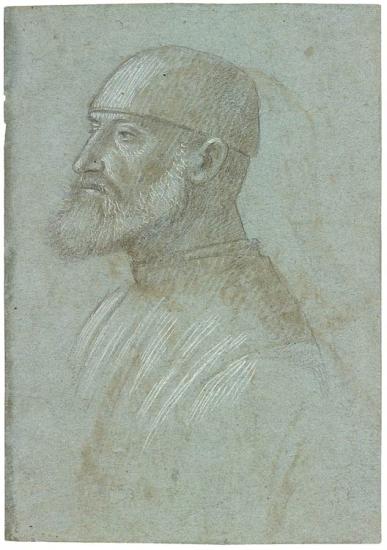
Head of Bearded Man Wearing a Cap, in Profile to the Left
Purchased by Pierpont Morgan, 1909
Carpaccio's large narrative scenes made for Venetian scuole—lay confraternities run by merchants and citizens excluded from politics because they were not of noble blood—often included likenesses of the institution's dignitaries. This drawing has been associated with the artist's Life of Saint Ursula cycle (Accademia, Venice), although no equivalent figure appears in those paintings.
The typically Venetian technique of brush drawing on blue paper became highly advanced in the hands of Gentile Bellini and Carpaccio.
Portraiture
Inspired by earlier northern European models, Venetian artists of the sixteenth century approached portraiture with a new naturalism. Portraits of individuals were commissioned to document physical likeness as well as social status, often conveyed through opulent clothing and lavish settings. Initially, most sitters were portrayed in strict profile, much like the depictions on ancient coins. Later, evocative three-quarter or frontal views dominated, inviting a more direct and intimate relationship with the viewer. In Venice and northern Italy, group portraits became fashionable. The artist Palma Giovane, for example, produced numerous quick sketches of his large family and wide circle of friends. Through the work of such artists as Carpaccio, Titian, Veronese, and Tintoretto, Venice established a remarkable portraiture tradition.
